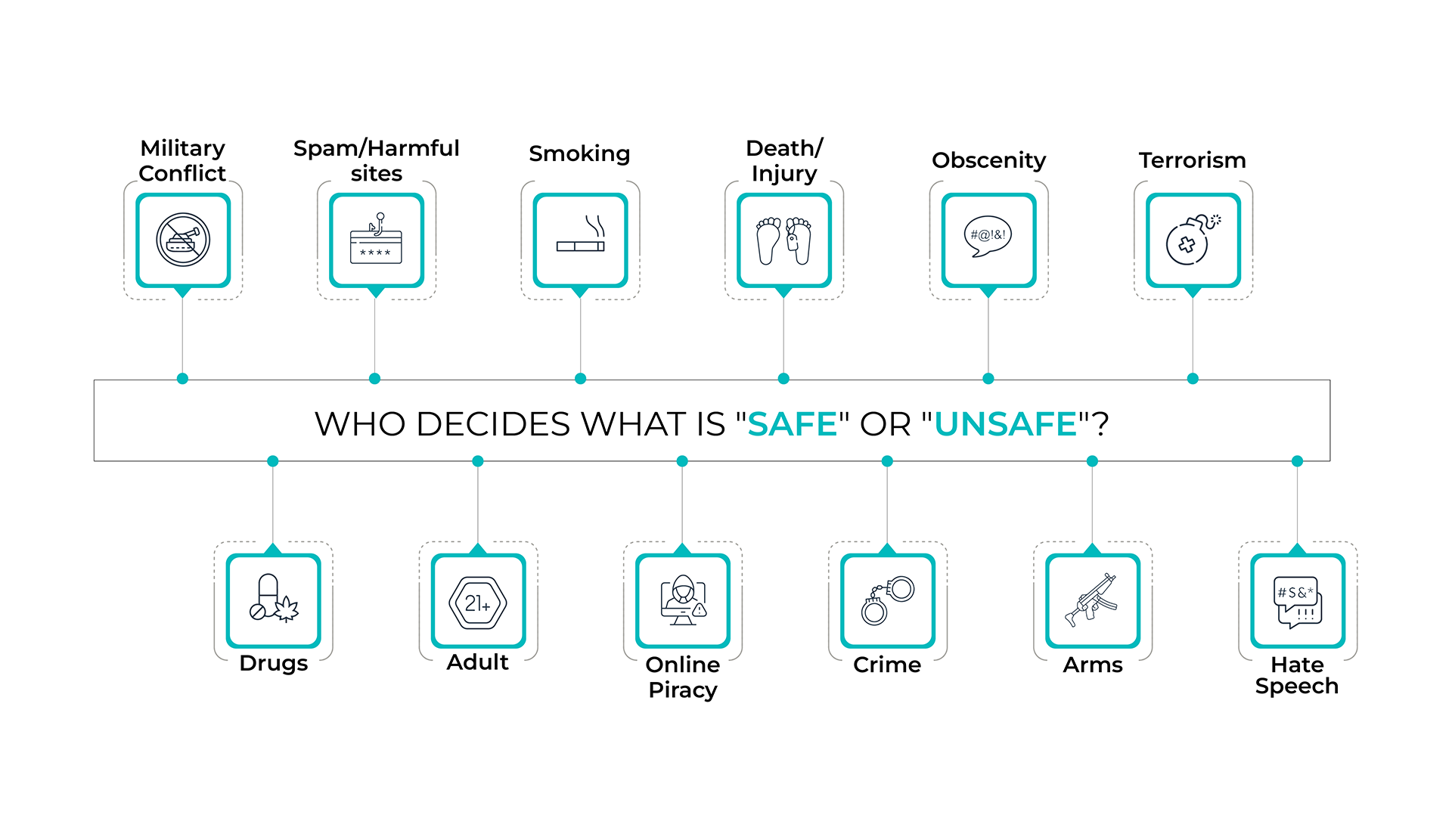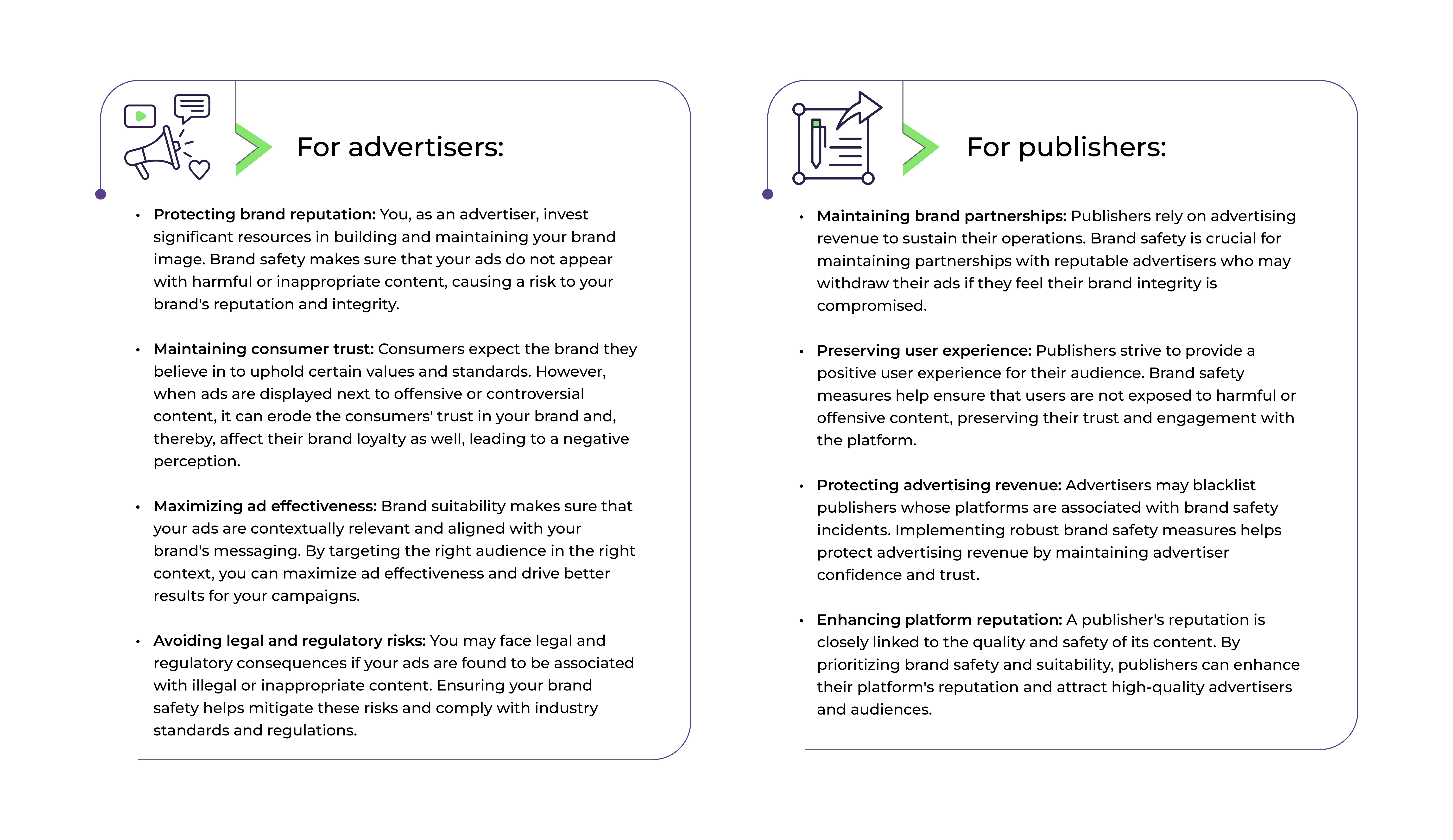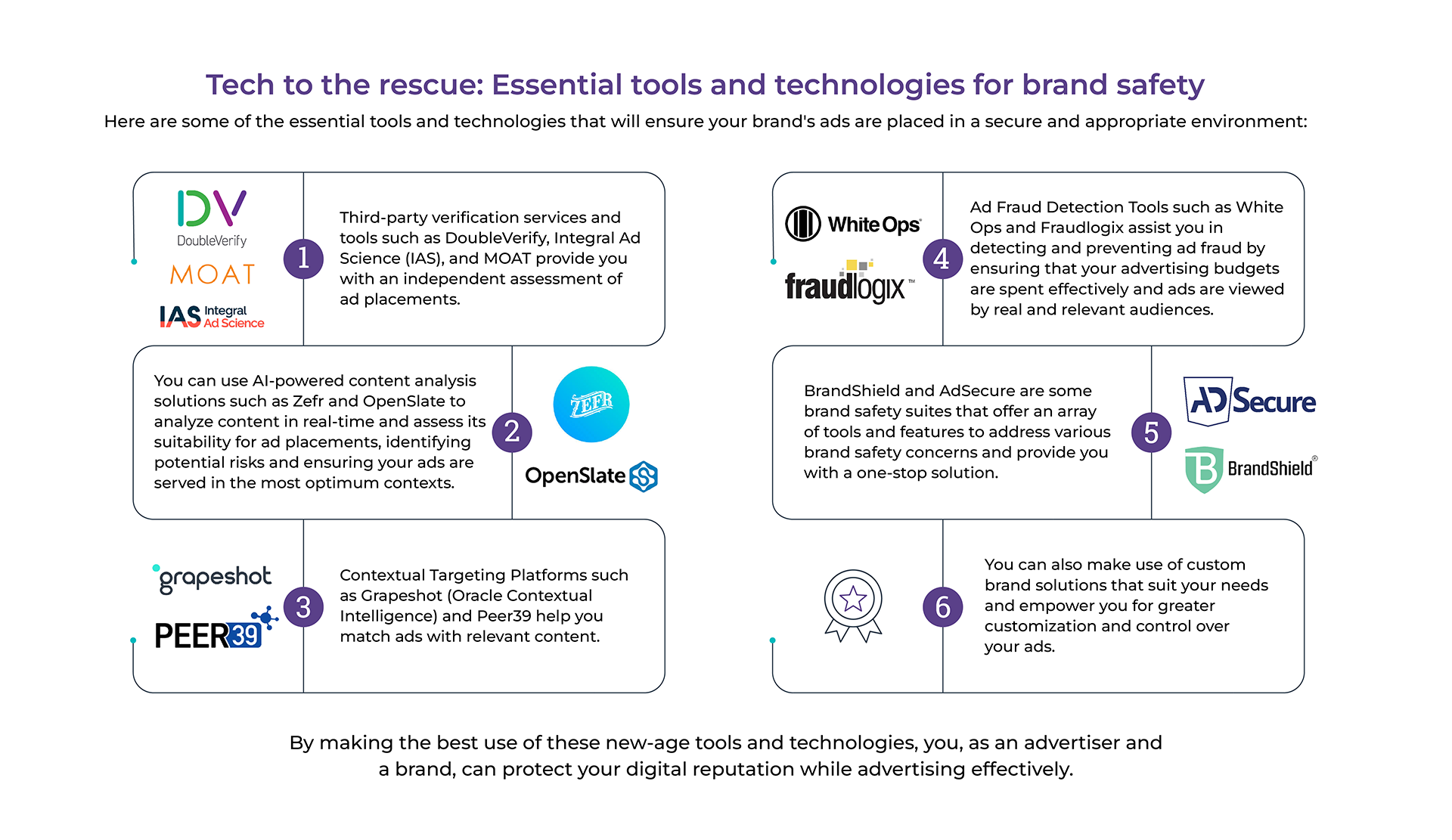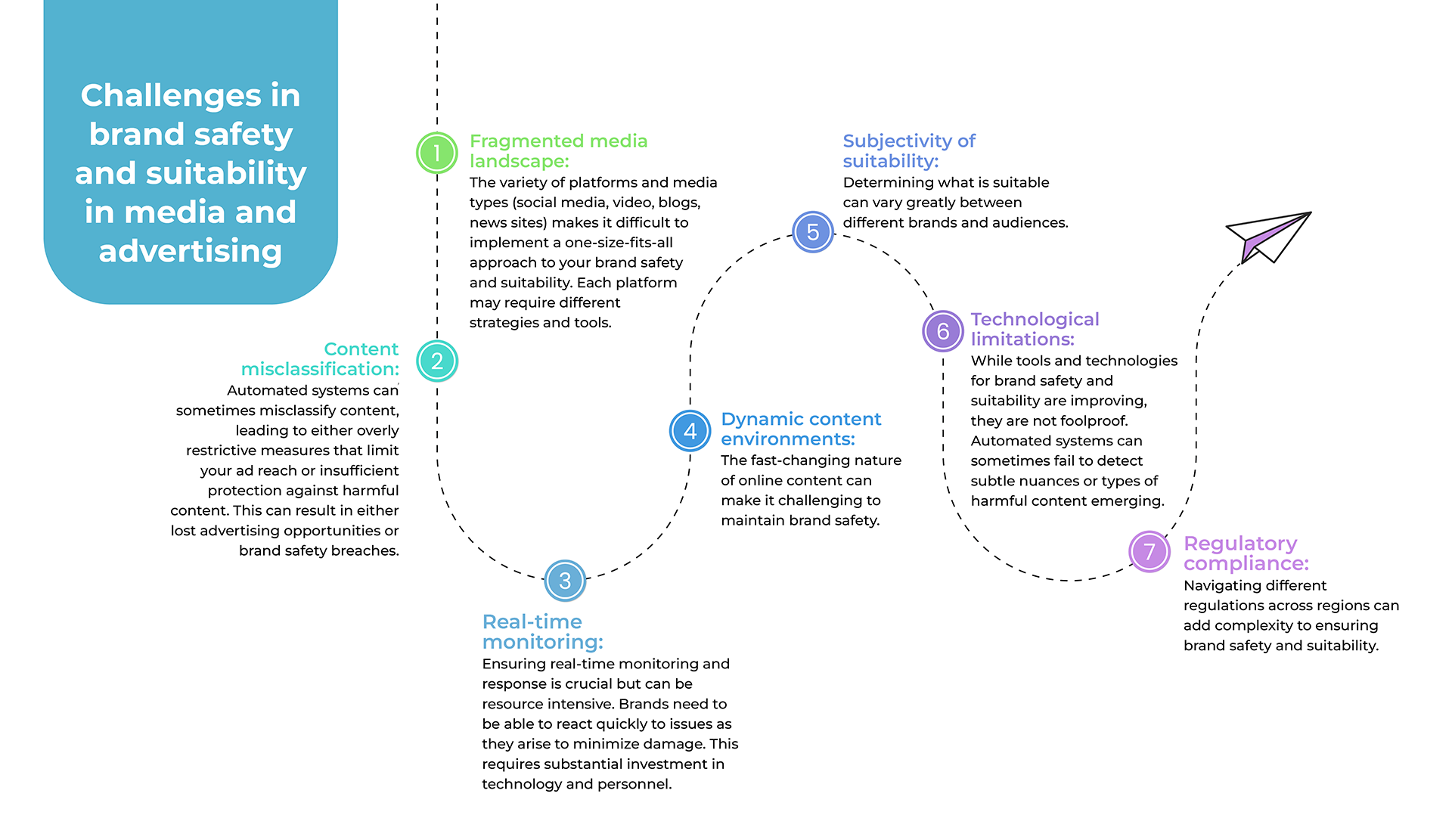Overview: Setting the stage
In the current scenario, your brand's reputation is more crucial than ever before. In the world of digital advertising, it is vital that your brand's image gets conveyed in the right context. Ad placements have a significant effect on how consumers perceive your brand and its reputation. Today, customers hold brands answerable for not only the quality of products and services but also their relevance to societal values and norms. Errors in brand safety can result in disastrous consequences such as social boycotts and declined sales. They can affect consumer confidence and eventually impact the brand’s financial performance.
Due to programmatic advertising as well as behavioral targeting, your brand may find its ads appearing alongside harmful content that can potentially damage its credibility with customers, putting off the brand's followers and lowering customer loyalty.
So how do we make sure that your brand messaging is safe? And why is brand safety so important for the future of our industry? This blog post will take an in-depth look into what brand safety means by outlining some protective strategies and explaining why prioritizing your brand's safety matters for your brand's success.
Defining the shield: What is brand safety?
Brand Safety is all about how you can protect your brand's reputation by using certain measures and strategies that ensure your ads do not appear in harmful or questionable places. In other words, it means making sure that ads are not shown together with inappropriate material such as hate speeches, violence, adult content, or fake news. The primary idea here is to escape negative associations that would reduce the brand's credibility and trust.
Key aspects of brand safety include:
- Blocking unsafe content using tools and technologies to confirm ads are not placed next to harmful or controversial content.
- Preventing ad fraud by ensuring protection against fraudulent activities that can waste advertising budgets and damage brand reputation.
- Practicing compliance with regulation by ensuring that ad placements adhere to legal and industry standards.
What is brand suitability?
Brand suitability considers the relevance and appropriateness of the ad placement in relation to your brand's values, message, and target audience. It is about optimizing the context in which ads appear to enhance a positive brand perception and engagement.
Key aspects of brand suitability include:
- Contextual relevance: Ensuring that ads are placed in environments that align with your brand's values and resonate with your target audience. For example, a luxury brand might prefer its ads to appear alongside high-end lifestyle content rather than generic or unrelated topics.
- Audience alignment: Matching ad placements with content that attracts your desired audience demographics, ensuring that the messaging is relevant and engaging for those viewers.
- Nuanced content understanding: Using advanced tools to understand the subtleties of content and how it aligns with your brand's image and objectives, going beyond basic safety checks to ensure the most suitable ad environments.
Drawing the line: Brand safety vs brand suitability
While both concepts aim to safeguard your brand's reputation, they approach this goal differently. Brand safety primarily focuses on preventing your ads from appearing alongside content that could harm the brand's image while brand suitability aims at putting your ads in relevant contexts where they can enhance your message to your target audience. These ideas go together to help your brand deal with today's digital advertising complexity so as to remain safe and generate positive outcomes at all times.
Who decides what is "safe" or "unsafe"?
There are many organizations working towards defining brand safety measures such as the Interactive Advertising Bureau (IAB) and Media Rating Council (MRC). These trade associations, along with vendors who specialize in brand safety, together define standards and best practices for publishers, advertisers, and agencies to follow in order to maintain a healthy supply chain.

Why it matters: The critical role of brand safety and suitability
Brand building is a process that can take quite some time and many promotional efforts for your brand to penetrate the minds of consumers. The consumers not only associate with the products and services offered but also the values and principles being upheld by your brand. This represents the fact that even a single, less-than-desired association carries the potential to harm your brand and the consumers' trust in it. Optimizing your brand safety is not only restricting undesirable content but also allowing the brand to enrich itself with the proper content that will be suitable for its image and the expectations of ordinary consumers.
Brand safety and brand suitability are not only relevant for you as an advertiser but also for the publishers, as they risk losing revenue due to ads being placed on sensitive content.

Tech to the rescue: Essential tools and technologies for brand safety
Here are some of the essential tools and technologies that will ensure your brand's ads are placed in a secure and appropriate environment:

Standout strategies for ensuring brand suitability and relevance
It is important for you to ensure your brand's suitability in order to maintain a positive outlook and safeguard your brand's reputation.
Here are some strategies that'll help you do so and ensure your ads are placed in an appropriate environment where they will get noticed:
- Regularly monitor your ad placements in real-time to identify if your ads are appearing alongside inappropriate or harmful content and address the same.
- You can also employ contextual targeting strategies and prioritize them to ensure your ads are served and shown in relevant and brand-appropriate environments.
- You can also create a whitelist of all the trusted publishers and platforms where your ads can be safely displayed and similarly maintain a blacklist of sites or content categories that you should avoid getting your ads on.
- In order to enforce guidelines and address the issues promptly, you can work closely with your advertising partners and maintain clear communication with them regarding your brand safety and suitability requirements.
- It is imperative for you to stay up to date with the latest policies and updates from each advertising platform to confirm your settings and practices are aligned with the current standards.
- Regular audits and monitoring of your ad placements and performance data will ensure you meet ongoing compliance with your brand safety standards.
Brand safety and security across various platforms
Brand safety and suitability are crucial for maintaining your brand's integrity across digital advertising platforms such as Google Ads and Display & Video 360 (DV360). On Google Ads, you can utilize content and placement exclusions, site category options, and keyword exclusions to avoid undesirable content. Additionally, regular ad review and approval processes help ensure your ads appear in appropriate environments. Similarly, DV360 offers brand safety targeting, third-party verification services, custom safety profiles, and inventory source selection to maintain high standards of content quality. For meta platforms (Facebook and Instagram), placement controls, block lists, inventory filters, and proactive monitoring confirm your ads are displayed in suitable contexts. Leveraging these strategies and tools can help protect your brand's reputation across all advertising channels.
Challenges in brand safety and suitability in media and advertising
Ensuring your brand's safety and suitability in media and advertising is a complex task. Below are some key challenges:

A peek into the future of brand safety and suitability
In all probability, the future of brand safety and suitability in the digital advertising industry will revolve around the upcoming trends such as AI and machine learning for content analysis in real-time. Your brand will be driven to adopt more robust and transparent measures as the focus, with the advent of A.I., shifts to stricter regulations and ethical advertising. As consumer control over online experiences grows, you will have to ensure that the ads are relevant and welcome in the personalized environment.
This can be achieved with a collaborative industry effort and a holistic approach to maintaining brand integrity to ensure that all aspects of a brand's presence align with its core values and audience expectations.
Conclusion
Brand safety and suitability are the two primary components that make your digital advertising strategy successful. You can protect the reputation of your brand, maintain customer trust, and ensure that your advertising message reaches the target audience positively by leveraging the right tools and adopting a proactive strategy. With the continuously evolving digital landscape, staying ahead in terms of brand safety and suitability remains essential for both advertisers and publishers.
Secure you brand's integrity with Cybage
Are you interested to know more about brand safety? Take control of your brand's safety and suitability with Cybage's expertise. Our team offers advanced, real-time monitoring, and customizable suitability parameters to protect your brand and align with your values. Reach out to us today and discover how Cybage can elevate your brand's integrity and reputation.











